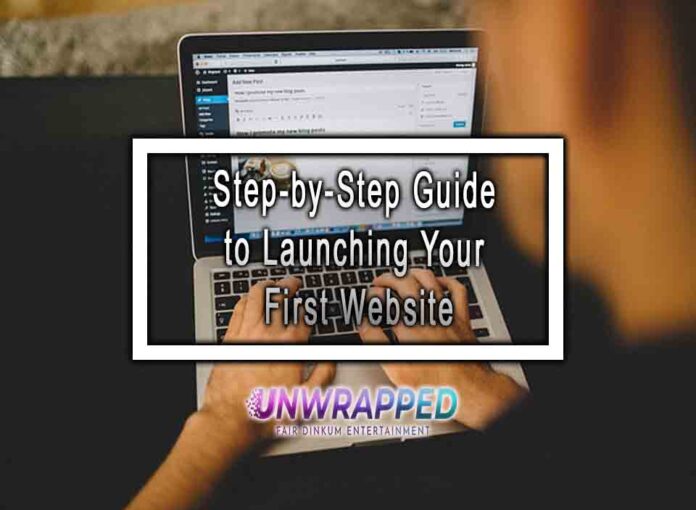Launching your very first website can feel a bit like embarking on an exciting, uncharted journey. You may have an idea—be it a small business, a personal blog, an online portfolio, or an eCommerce store—but transforming that vision into a fully functional, well-designed, and discoverable website can be intimidating. Don’t worry: with the right guidance, setting up your site can be a straightforward and even enjoyable process.
This comprehensive, step-by-step guide is designed to help first-timers navigate each stage of website creation, from initial planning to hitting “publish.” By the end, you’ll have a clear roadmap for building a polished, secure, and search-friendly site that aligns with your brand and goals.
Why Launching Your Own Website Matters
Before we dive into the “how,” let’s underscore the “why.” Owning a website puts you in full control of your online presence. Rather than relying solely on social media or third-party platforms, a website gives you:
- Credibility and Authority: Having a dedicated online space signals professionalism and legitimacy.
- Branding Opportunities: Your website’s look, feel, and content all reflect your unique identity—something you can’t always customize on other platforms.
- Discoverability in Search Engines: A well-optimized website helps new audiences find you through Google, Bing, and other search tools.
- Ownership of Your Audience and Data: Unlike social media platforms that can change their rules overnight, your website is truly yours.
- Room for Growth and Expansion: As your needs evolve, you can easily add features, expand your product line, or integrate new marketing tools.
In short, a website lays a solid foundation for growth, customer trust, and long-term success online.
Step 1: Define Your Purpose and Goals
The first step in launching any website is clarity—what do you want it to accomplish?
- Identify Your Audience: Who are you trying to reach? Understanding your target visitors helps guide your design, content, and marketing strategy.
- Set Clear Objectives: Are you looking to sell products, showcase a portfolio, share valuable information, or grow an online community? Your site’s purpose will influence everything from layout to tone.
- Envision the User Experience (UX): Imagine how visitors will navigate your site. What information should they see first? What’s the ideal user journey from the homepage to conversion (e.g., signing up for a newsletter or making a purchase)?
By defining your purpose and goals upfront, you’ll have a roadmap for making every decision—from domain choice to layout—in alignment with your ultimate vision.
Step 2: Choose and Secure Your Domain Name
Your domain name is your digital address. It’s how people find you online and remember your brand. A great domain should be:
- Short and Memorable: Aim for simplicity. Shorter names are easier to remember and type.
- Relevant to Your Brand or Niche: Reflect what you do or what you stand for, so visitors understand your site’s focus at a glance.
- Easy to Spell and Pronounce: Make it simple for users to share your domain through word-of-mouth or social media.
Most first-time website owners aim for a .com domain if available, as it’s the most recognizable and trusted extension. However, if it’s taken, consider alternative extensions like .net, .co, or something industry-specific.
Once you’ve brainstormed a few potential names, use a reputable domain registrar to check availability. If you find a suitable domain, register it immediately to secure your online identity.
Step 3: Select the Right Web Hosting
Web hosting is like the home that houses your website’s files and makes them accessible to visitors worldwide. A good hosting provider ensures fast loading times, high uptime, strong security, and reliable customer support. For first-time site owners, factors to consider include:
- Uptime Guarantees: Look for hosts that promise at least 99.9% uptime so your site remains accessible.
- Speed and Performance: Hosts that use SSD storage, caching, and content delivery networks (CDNs) can significantly speed up your site.
- Security Features: SSL certificates, firewalls, malware scanning, and automatic backups keep your data and visitors safe.
- Customer Support: 24/7 knowledgeable support is invaluable if you run into technical issues.
- Scalability: As your traffic grows, you’ll want a host that can easily adjust resources or allow you to upgrade your plan without major site overhauls.
Starting with a shared hosting plan is often the most budget-friendly and straightforward option. As your site gains traction, you can always switch to a more robust plan like VPS or dedicated hosting.
Step 4: Plan Your Website’s Structure and Content
Before diving into design, map out your website’s architecture. A well-organized site makes it easier for visitors to find what they need—and for search engines to understand your content. Consider:
- Essential Pages: At minimum, most sites need a homepage, about page, contact page, and pages for products or services. A blog can also help drive organic traffic.
- Clear Navigation: Ensure your main menu is easy to understand. Group related pages and use descriptive labels.
- User-Friendly Layout: Think about the placement of your logo, main call-to-action (CTA) buttons, and important information. Your homepage should direct users to critical content swiftly.
Next, plan your content. High-quality copy, images, and multimedia elements will shape your visitors’ experience. Consider hiring a copywriter or using professional photography if budget allows. Always aim for engaging, concise content that solves problems and answers user questions.
Step 5: Choose a Content Management System (CMS)
A CMS helps you easily update and manage your website’s content without needing advanced technical skills. The most popular CMS is WordPress, powering over 40% of the web. Other options include Joomla, Drupal, and site builders like Wix or Squarespace.
Why WordPress?
- Flexible and Customizable: Thousands of themes and plugins allow you to tailor the site to your brand’s unique style and functionalities.
- SEO-Friendly: WordPress is designed with clean code and supports SEO plugins that help boost your rankings.
- Thriving Community: You’ll never be short on tutorials, forums, and support resources.
For first-timers, WordPress hits the sweet spot between user-friendliness and scalability. Most reputable hosts offer one-click WordPress installation for a hassle-free setup.
Step 6: Install a Theme and Customize Your Design
Your site’s theme (or template) sets its overall aesthetic and layout. A professional, visually appealing design helps build trust and retain visitors. When choosing a theme:
- Prioritize Simplicity: Fancy animations and complex designs can slow down your site. Opt for clean, modern templates that highlight your content.
- Responsive Design: Ensure your theme looks great on all devices—mobile friendliness is crucial for both user experience and SEO.
- Customization Options: The ability to tweak colors, fonts, layouts, and graphics lets you align the look with your brand identity.
- SEO and Speed Optimized: Some themes are specially optimized for loading speed and search rankings, giving your site a head start.
After installing a theme, spend time customizing it. Upload your logo, adjust color palettes, and rearrange sections until it reflects your brand’s personality and is easy to navigate.
Step 7: Install Essential Plugins and Tools
Plugins are add-on tools that extend your site’s capabilities. While you don’t want to overload your site with unnecessary add-ons, a few key plugins can enhance performance, security, and functionality:
- SEO Plugin: Yoast SEO or Rank Math can help optimize your site’s content, metadata, and structure for better search visibility.
- Caching and Performance Tools: Plugins like WP Rocket or W3 Total Cache improve loading speed, crucial for user experience and rankings.
- Security and Backup Solutions: Wordfence or Sucuri help safeguard your site, while UpdraftPlus or Jetpack handle automatic backups.
- Contact Form and Newsletter Integrations: WPForms or Contact Form 7 let you collect inquiries easily, and email marketing integrations help grow your subscriber base.
- Analytics and Tracking: Google Site Kit or MonsterInsights allow you to monitor traffic and user behavior, so you can make data-driven decisions.
Select only the plugins you truly need. Too many can slow your site, so keep it lean and purposeful.
Step 8: Create and Optimize Your Content
Quality content is the heart of your website. Before you launch, produce a solid base of informative, engaging pages and posts. Consider the following content tips:
- Focus on Readability: Use short paragraphs, bullet points, and headings to break up text. Provide valuable, actionable information rather than fluff.
- Incorporate Keywords Naturally: Identify terms your audience might search for and include them in titles, headings, and body text—without forcing them.
- Include Compelling CTAs: Want visitors to sign up for a newsletter, request a quote, or make a purchase? Guide them with clear, visible CTAs.
- Use High-Quality Visuals: Relevant images, infographics, or videos keep users engaged and support your message. Optimize images for fast load times.
Great content not only keeps your audience engaged but also helps search engines understand your site’s relevance and authority.
Step 9: Test Your Website’s Performance and Usability
Before officially launching, put your site through a series of quality checks. Look for:
- Broken Links or Formatting Issues: Check all internal and external links. Ensure headings, lists, and text formatting display correctly across devices.
- Page Speed: Use tools like Google PageSpeed Insights or GTmetrix to evaluate and improve load times. Compress images and leverage caching if necessary.
- Mobile Responsiveness: View your site on smartphones and tablets. Pages should be easy to navigate, images scaled properly, and fonts large enough to read.
- Cross-Browser Compatibility: Check your site on popular browsers (Chrome, Firefox, Safari, Edge) to ensure a consistent user experience.
These tests ensure that when you launch, visitors have a seamless, professional encounter with your brand.
Step 10: Set Up Analytics, Tracking, and Security
Once your site is ready, put systems in place to track performance and maintain security:
- Google Analytics and Search Console: Install these free tools to monitor traffic, user behavior, and search queries. Insights help you refine your marketing strategies.
- SSL Certificate: Enable HTTPS to encrypt data and boost trust, as well as search rankings. Most reputable hosting providers include free SSL certificates.
- Regular Backups: Set up automatic backups so you can restore your site easily if something goes wrong. Store backups off-site for added security.
- Security Scans and Firewalls: Regularly scan for malware and ensure your security plugins are up to date. Enable two-factor authentication (2FA) where possible.
Proper tracking and security measures protect your investment and help you make informed decisions about site improvements.
Step 11: Launch and Announce Your Website
With everything tested and in place, it’s time to go live. Launching might be as simple as removing a “coming soon” page or pointing your domain’s DNS records to your hosting provider.
Spread the Word:
- Social Media: Announce your new site on social channels. Invite friends, family, and followers to check it out.
- Email Subscribers: If you have an email list, send out a launch announcement highlighting the value and features of your site.
- Local and Online Communities: Share your launch in relevant groups, forums, or local business communities to reach new audiences.
A coordinated launch announcement can jumpstart traffic and brand awareness.
Step 12: Maintain and Grow Your Website Over Time
Your work doesn’t end at launch. Successful websites are constantly evolving:
- Regular Updates: Keep your site fresh with new blog posts, updated product listings, and recent portfolio entries.
- Monitor Performance: Review analytics data regularly. Identify which pages perform well and which need improvement.
- Optimize and Improve: Experiment with new keywords, A/B test different CTAs, or refine your design for better conversion rates.
- Stay Current with Technology: Update your CMS, themes, and plugins to maintain security, compatibility, and performance.
As you invest time and effort, your website will grow, attract more visitors, and deliver increasing value to your audience.
Common Mistakes to Avoid
While following the steps above, stay alert to common pitfalls:
- Overcomplicating Your Design: A sleek, minimalist layout often outperforms a cluttered one. Simplicity enhances navigation and user experience.
- Ignoring Mobile Users: With most web traffic coming from mobile devices, a responsive design is non-negotiable.
- Neglecting SEO: Even a stunning site needs optimization. Without it, your pages may never rank well in search results.
- Skipping Security Measures: Cheap or outdated hosting and lack of SSL certificates can turn users away and risk your site’s integrity.
- Not Backing Up Your Site: Regular backups protect your hard work from unexpected failures, hacks, or human error.
Learning from these common missteps can save you time, money, and frustration down the line.
Conclusion: Your Online Journey Starts Here
Launching your first website is a milestone—one that empowers you to share your voice, products, or services with the world on your own terms. With careful planning, the right tools, and a commitment to quality, you can create a platform that stands out in search results, engages visitors, and propels your brand forward.
As you implement each step—from defining your goals and choosing a domain, to refining your content and optimizing for search engines—remember that continuous improvement is key. The digital landscape is always evolving, and your willingness to adapt, experiment, and grow will ensure your website thrives.
You’ve got the blueprint. Now it’s time to turn your vision into a dynamic, impactful online presence—and welcome your audience to a website you can be truly proud of.
Call to Action
Are you ready to confidently launch your website? First, pick a hosting plan that suits your requirements. These procedures will assist you in creating a strong foundation for your website, regardless of your level of experience as a webmaster. Good luck!


Click on the code below or the Hostinger image to enjoy 20% off when you purchase a plan with Hostinger.
Referral Code: 1LAINE09
If you need assistance, send a message to talktounwrapped@gmail.com.
Another Must-Read: Top 5 Benefits of Using Hostinger for WordPress Hosting










